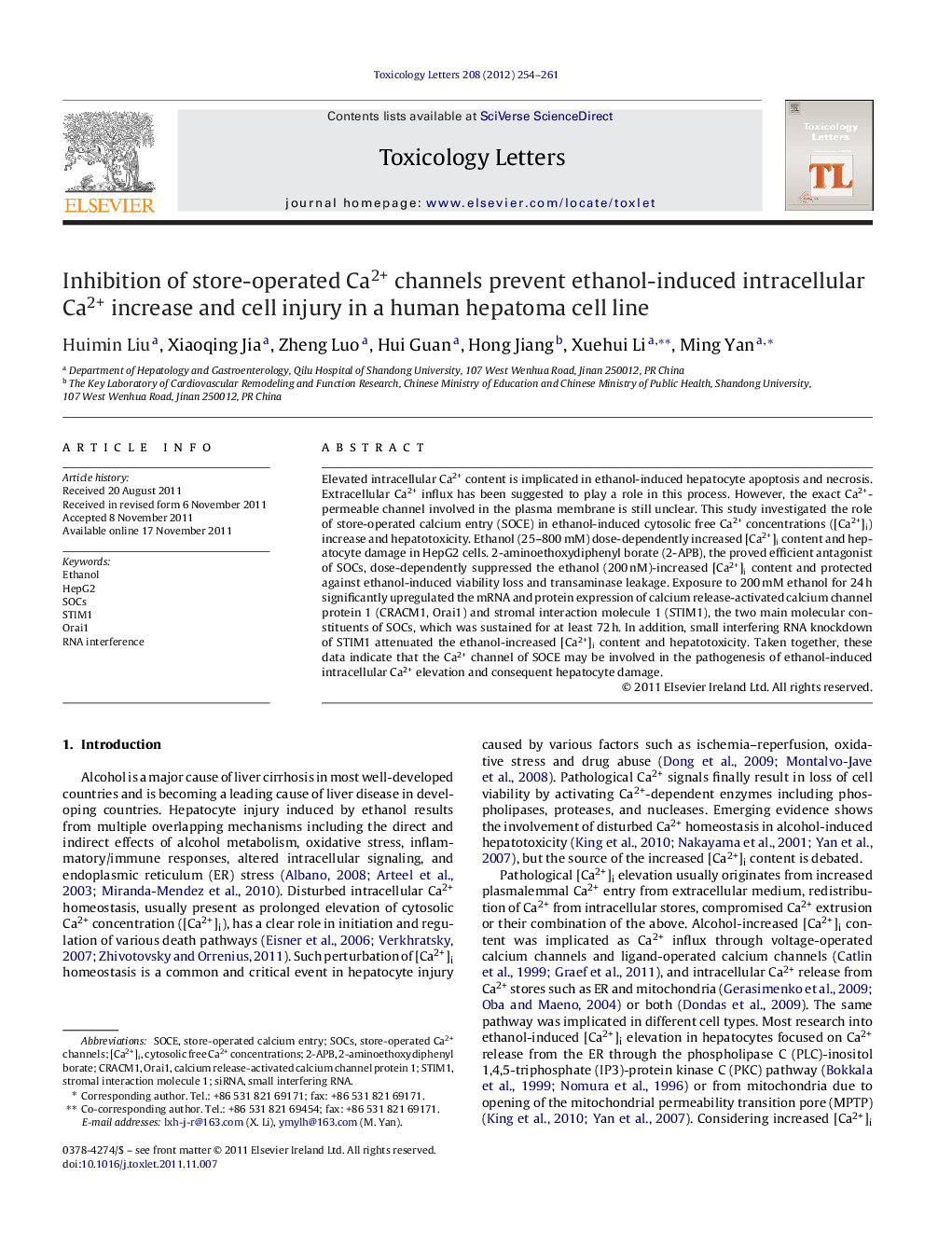| Article ID | Journal | Published Year | Pages | File Type |
|---|---|---|---|---|
| 2599802 | Toxicology Letters | 2012 | 8 Pages |
Elevated intracellular Ca2+ content is implicated in ethanol-induced hepatocyte apoptosis and necrosis. Extracellular Ca2+ influx has been suggested to play a role in this process. However, the exact Ca2+-permeable channel involved in the plasma membrane is still unclear. This study investigated the role of store-operated calcium entry (SOCE) in ethanol-induced cytosolic free Ca2+ concentrations ([Ca2+]i) increase and hepatotoxicity. Ethanol (25–800 mM) dose-dependently increased [Ca2+]i content and hepatocyte damage in HepG2 cells. 2-aminoethoxydiphenyl borate (2-APB), the proved efficient antagonist of SOCs, dose-dependently suppressed the ethanol (200 nM)-increased [Ca2+]i content and protected against ethanol-induced viability loss and transaminase leakage. Exposure to 200 mM ethanol for 24 h significantly upregulated the mRNA and protein expression of calcium release-activated calcium channel protein 1 (CRACM1, Orai1) and stromal interaction molecule 1 (STIM1), the two main molecular constituents of SOCs, which was sustained for at least 72 h. In addition, small interfering RNA knockdown of STIM1 attenuated the ethanol-increased [Ca2+]i content and hepatotoxicity. Taken together, these data indicate that the Ca2+ channel of SOCE may be involved in the pathogenesis of ethanol-induced intracellular Ca2+ elevation and consequent hepatocyte damage.
► Effect of ethanol on SOCE was investigated in HepG2. ► Ethanol induced dose-dependent [Ca2+]i increase and hepatocyte damage in HepG2 cells. ► Ethanol up-regulated expression level of SOCs proteins (Orai1 and STIM1). ► STIM1 knockdown and 2-APB reduced ethanol-increased [Ca2+]i and hepatotoxicity. ► SOCE is a potential way of ethanol-induced [Ca2+]i elevation and hepatocyte damage.
